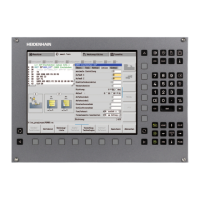January 2012 9.1 Introduction 1759
9 Data Interfaces
9.1 Introduction
In addition to their Central Processing Unit (CPU), computer systems usually
include various peripheral devices.
A CPU is, for example:
PC
Control
Peripheral devices include:
Printers
Scanners
External storage devices, such as hard disks, floppy-disk drives or USB
memory sticks.
Other computer systems
A data interface makes it possible for the CPU and its peripheral devices to
communicate.
The interfaces, which consist of physical links between the computer system
and the peripherals, need a transmission line and appropriate software in order
to transfer data between the individual units.
Standard interfaces include:
Ethernet
USB 1.1
RS-232-C/V.24
The relationship between hardware and software, which fully defines an
interface, is illustrated by the following diagram:
The hardware in the diagram covers all the physical components, such as
Circuit design
Pin Layout
Electrical characteristics
The software is the operating software, which includes, for example, the
drivers for the output modules.
Software
Hardware
Software
Computer
Peripherals
e.g. PC,
control
e.g. printer,
external
memory

